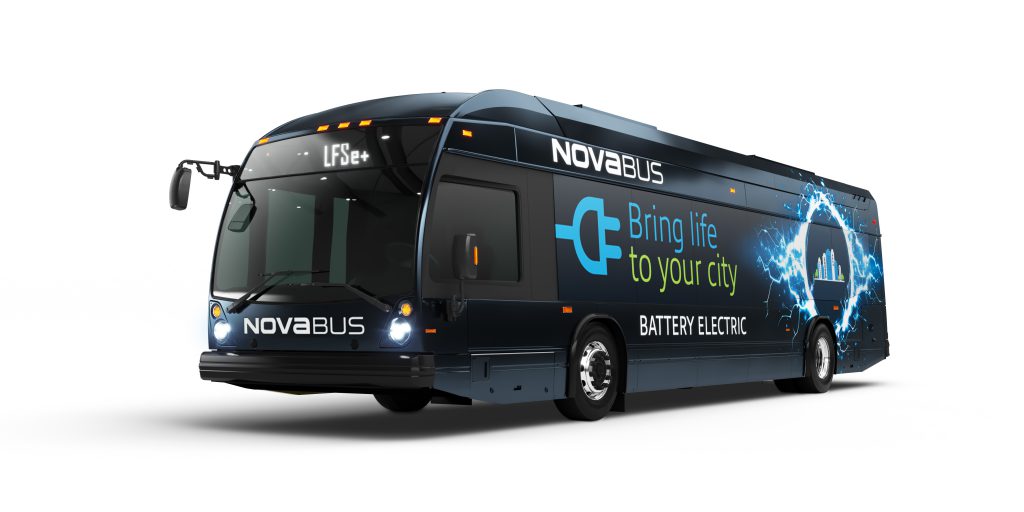Federal Funds Could Finance Transition to Electric Buses
Milwaukee County seeking grants to purchase 32 battery electric buses.
The Milwaukee County Department of Transportation (MCDOT) plans to seek approximately $55.2 million in federal grants for bus replacements to help finance the Milwaukee County Transit System’s transition to an electric fleet.
In 2021, MCTS , which is overseen by MCDOT, reported that it will need to replace approximately 233 buses by 2024. If all of these buses were replaced with the cheapest option, clean-diesel buses, it would cost the system approximately $117 million. But many of these buses, it appears, will be replaced with Battery Electric Buses (BEB), which cost as much as $1.5 million a bus.
The “useful-life” of a bus, as transit officials often describe it, is approximately 15 years in Milwaukee County. A significant chunk of the county’s fleet will hit that 15 year mark at approximately the same time, because they were purchased with funds from the 2009 American Relief and Recovery Act, the federal stimulus plan passed after the 2008 financial crisis.
The county’s policies around bus replacement and the eventual transition to an electric fleet began with the planning process for the East-West Bus Rapid Transit line and former chairman of the county board Theodore Lipscomb, Sr.
The federal grant that provided the majority of funding for the East-West Bus Rapid Transit (BRT) line currently being built included funding for 11 electric buses to run on the line. Then in 2019, Lipscomb made it the county’s policy to begin pursuing a transition of the county’s fleet to electric buses or diesel hybrid-electric with an amendment to the 2020 county budget.
Later, in 2020, the county board altered the county’s bus replacement policy, pausing any further purchases of BEB’s until the county studied the performance of the electric buses along the BRT line. The new policy was to pursue diesel hybrid-electric buses for future replacements.
Later, the policy was changed again, when MCDOT reported to the county board that hybrid buses didn’t offer the emissions reductions originally thought, and that maintenance of the buses would be significantly more complex. The new policy, as proposed by MCDOT, made it the county’s plan to transition directly from diesel buses to electric.
If MCDOT secures the federal grant funding it seeks, it will be the first major investment in fleet electrification for the county. The federal grants will require a 20% local funding match, which will amount to approximately $13.8 million.
In 2021, the county selected Nova Bus as the manufacturer for its first purchase of BEB’s, 11 of which will run on the BRT line. The other four buses will be used on regular MCTS bus routes as a pilot program for the transit system to study their performance.
Along with the funding for bus replacements, the county is also going after approximately $540,000 in BIL grants for 10 electric vehicles for MCDOT’s Fleet Management Division, and $1.488 million for the Transportation Services Division to make signal upgrades along county trunk highways. The total local match for these grants would be $520,000.
MKE County
-
Ron Johnson Says Free-Market Principles Could Fix Education
 Jul 17th, 2024 by Graham Kilmer
Jul 17th, 2024 by Graham Kilmer
-
RNC Will Cause Some County Services To Be Moved to Wauwatosa
 Jul 12th, 2024 by Graham Kilmer
Jul 12th, 2024 by Graham Kilmer
-
Hank Aaron State Trail Will Be Closed For RNC, State Fair
 Jul 12th, 2024 by Graham Kilmer
Jul 12th, 2024 by Graham Kilmer
Transportation
-
MCTS Adds 28 New Buses
 Jul 13th, 2024 by Graham Kilmer
Jul 13th, 2024 by Graham Kilmer
-
MCTS Designing New Bus Shelters
 Jul 10th, 2024 by Graham Kilmer
Jul 10th, 2024 by Graham Kilmer
-
MCTS Updates RNC Bus Detours To Better Serve Downtown, Riders
 Jul 9th, 2024 by Jeramey Jannene
Jul 9th, 2024 by Jeramey Jannene





















$40 billion per month divided by 30 days = $1,333,333,333 per day for Joe Biden’s war against Russia.
$1,333,333,333 divided by 24 hours = $55,555,555 per hour of war.
$55,555,555 divided by 60 minutes = $925,8925 per minute of war.
233 electric buses times $1,500,000 per bus = $349,500,000 dollars for 233 buses.
$349,500,000 for 233 electric buses divided by $925,925 per minute of war = 377 minutes.
If we can stop Biden’s war against Russia, 233 brand new electric buses can be delivered to a different American city every 6 hours, for free.
we should evaluate purchasing smaller busses. smaller bus vehicles could be implented as needed on routes that don’t require a full size bus! likely saves millions on the upfront capital costs and ongoing maintenance costs.
It is simply a tremendous waste of money to operate the gigantic bus vehicles on every route every day instead of using smaller bus vehicles tailored to the capacity needs.
why is this not even considered as an option to evaluate? Where are the UM “corporate subsidy” watchdogs (aka: Michael Horne) on this issue?
Given MCTS’ precarious financial state, I’m concerned about the costs associated with having to “debug” a new technology and having to maintain two types of vehicles. Electric technology is promising, but let other better endowed organizations/businesses be the ones who do the debugging / learning curve.
@wardt01 – Going from memory on past discussions of this issue with county officials – MCTS previously had a fleet that included buses of varying sizes. It proved more expensive to operate because of the different maintenance/repair needs, the fact that fuel economy wasn’t substantially greater and that few of the routes could truly take advantage of a smaller bus (i.e. say the last trip is low traffic, swapping the bigger bus for the smaller bus on that trip would cost more in time than the savings it would yield). The overwhelming cost driver is labor.
Wardt01, transit buses come in 4 sizes: 30, 35, 40, & 60-foot lengths. (The 60-footers have 3 axles and bend in the middle like an accordion.) MCTS uses 40-foot buses. According to this article, diesel (non-hybrid) 40-foot buses cost about $500,000 and battery electric buses (BEBs) cost 3 times as much.
How much cheaper would 30-foot buses be? Perhaps 15-20% cheaper to buy (even a short bus requires the same number of headlights, taillights, axles, motors, transmissions, wipers, brakes, driver controls, doors, and wheelchair lifts, etc), but nearly as expensive to operate. The driver cost would be the same as would liability insurance and most maintenance (again, short buses still have the same number of maintenance-prone components—headlights, taillights, axles, motors, transmissions, etc), but fuel and cleaning expenses would be slightly lower.
MCTS has about 400 buses, many of which are out on the streets for 12 hours at a time. (This is one reason BEBs are so expensive—batteries are massive, especially if the BEB is electrically heated in a cold climate like Milwaukee.)
For argument’s sake, let’s say MCTS could get by with 350 full-size buses and 50 short ones. (And I suspect the true number is less than 50; only a small portion of the fleet consistently sees passenger loads that never exceeds the capacity of a 30-foot bus over its long service day.) So, if 30-foot buses cost 20% less to buy, MCTS would “save” $5 million on diesels ($100,000 each) or $15 million on BEBs by replacing 50 full-size buses with shorties.
I put “save” in quotes because the federal government generally pays 80% of vehicle costs (the feds subsidize capital spending, but almost never subsidize operating costs), so MCTS’ actual savings would come to $1 million (diesels) or $3 million (BEBs) less whatever added costs they incur for having a mixed fleet.
And that $1 million savings ($3 million for BEBs) must be spread over the 15-year lifetime of a bus which works out to between $67k and $200k annually (total for the ENTIRE fleet, not per bus)—around one tenth of one percent of their annual operating budget ($129 million in 2017, for example).
Given the continuing driver shortage (not just with MCTS, but with transit systems nationwide), I almost think MCTS should consider buying bigger buses to carry more people with fewer drivers.